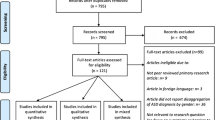Abstract
Objective
To determine the diagnostic accuracy of Indian Scale for Assessment of Autism (ISAA) in children aged 2–9 year at high risk of autism, and to ascertain the level of agreement with Childhood Autism Rating Scale (CARS).
Design
Diagnostic Accuracy study
Setting
Tertiary-level hospital.
Participants
Children aged between 2 and 9 year and considered to be at a high risk for autism (delayed development, and age-inappropriate cognition, speech, social interaction, behavior or play) were recruited. Those with diagnosed Hearing impairment, Cerebral palsy, Attention deficit hyperactivity disorder or Pervasive developmental disorders (PDD) were excluded.
Methods
Eligible children underwent a comprehensive assessment by an expert. The study group comprising of PDD, Global developmental delay (GDD) or Intellectual disability was administered ISAA by an investigator after one week. Both evaluators were blinded. ISAA results were compared to the Expert’s diagnosis and CARS scores.
Results
Out of 102 eligible children, 90 formed the study group (63 males, mean age 4.5y). ISAA had a sensitivity 93.3, specificity of 97.4, positive and negative likelihood ratios 85.7 and 98.7 and positive and negative predictive values of 35.5 and 0.08, respectively. Reliability was good and validity sub-optimal (r low, in 4/6 domains). The optimal threshold point demarcating Autism from ‘No autism’ according to Receiver Operating Characteristic curve was ISAA score of 70. Level of agreement with CARS measured by Kappa coefficient was low (0.14).
Conclusions
The role of ISAA in 3–9 year old children at high risk for Autism is limited to identifying and certifying Autism at ISAA score of 70. It requires re-examination in 2–3 year olds.
Similar content being viewed by others
References
American Psychiatric Association. Autistic Spectrum Disorders. In: Diagnostic and Statistical Manual of Mental disorders. 5th ed. Arlington VA: American Psychiatric Association; 2013.p.50–9.
American Psychiatric Association. Autistic Disorder. In: Diagnostic and Statistical Manual of Mental Disorders. 4rth ed. Washington DC: American Psychiatric Association; 1994.p.70–5.
Centers for Disease Control. Prevalence of autism spectrum disorders-autism and developmental disabilities monitoring network, 14 sites, United States, 2008. Morbid Mortal Wkly Rep. 2007;56:1–28.
Raviola G, Gosselin GJ, Walter HJ, DeMaso DR. Pervasive Developmental Disorders and Childhood Psychosis. In: Kliegman RM, Stanton BF, St. Gene III JW, Schor NF, Behrman RE, editors. Nelson Textbook of Pediatrics. 19th ed. Philadelphia: Saunders, Elsevier; 2012.p.100–7.
Deshmukh VB, Mohapatra A, Gulati S, Nair M, Bhutani VK, Silberberg DH, et al. Prevalence of neurodevelopmental disorders in India. Proceedings of International Meeting for Autism Research; 2013 May 4; Kursaal Centre, Donostia, San Sebastián, Spain. Available from: https//imfar.confex/imfar/2013/webprogram. Accessed April 5, 2014.
Chawarska K, Volkmar FR. Autism in Infancy and Early Childhood. In: {Volkmar FR, Paul R, Klin A, Cohen D}, editors. Handbook of Autism and Pervasive Developmental Disorders. 3rd ed. New Jersey: John Wiley and Sons, Inc; 2005.p.223–46.
Klin A, Saulnier C, Tsatanis K, Volknar FR. Clinical Evaluation in Autism Spectrum Disorders: Psychological Assessment with a Transdisciplinary Framework. In: Volkmar FR, Paul R, Klin A, Cohen D, editors. Handbook of Autism and Pervasive Developmental Disorders. 3rd ed. New Jersey: John Wiley and Sons, Inc; 2005.p.772–98.
World Health Organization. The International Classification of Diseases 10. Classification of Mental and Behavioral Disorders: Clinical Descriptions and Diagnostic Guidelines. Geneva: World Health Organization;1992.
Lord C, Risi S, Cook EH, Dilavore PC. The Autism Diagnostic Observation Schedule-Generic: a standard measure of social and communication deficits associated with the spectrum of autism. J Autism Dev Dis. 2000;24:659–85.
Lord C, Rutter M, LeCouteur A. The Autism Diagnostic Interview-Revised: a revised version of a diagnostic interview for caregivers of individuals with possible pervasive developmental disorders. J Autism Dev Dis. 1994;24:659–85.
Schopler E, Reichler RJ, Renner BR. The Childhood Autism Rating Scale (CARS). Los Angeles: Western Psychological Services, Inc;1988.
Freeth M, Sheppard E, Ramachandran R, Milne E. A crosscultural comparison of autistic traits in the UK, India and Malaysia. J Autism Dev Disord. 2013;43:2569–83.
Russell PSS, Daniel A, Russell S, Mammen P, Abel JS, Raj LE, et al. Diagnostic accuracy, reliability and validity of Childhood Autism Rating Scale in India. World J Pediatr 2010;6:141–7.
Ministry of Social Justice and Empowerment. Scientific Report on Research Project for Development of Indian Scale for Assessment of Autism. New Delhi: Government of India; 2009.
Ministry of Social Justice and Empowerment. The National Trust for Welfare of Persons with Autism, Cerebral Palsy, Mental Retardation and Multiple Disability, The National Trust Regulations, 2001. Available from: www.socialjustice.nic.in/ntregu2001.php. Accessed June 23, 2014.
National Trust Web based Intervention Resource Centre. Indian Scale for Assessment of Autism. Available from: www.nationaltrust.co.in. Accessed May 6, 2012.
Alpern GD, Boll TJ, Shearer M. Developmental Profile II. Los Angeles: Western Psychological Services; 1989.
Sparrow SS, Balla DA, Cicchetti DV. Vineland Adaptive Behavior Scales. Circles Pines: AGS Publishing; 2005.
Kumar R, Dudala SR, Rao AR. Kuppuswamy’s socioeconomic status scale- a revision of economic parameter for 2012. IJRDH 2013;1:2–4.
Juneja M, Mukherjee SB, Sharma S. A descriptive hospital based study of children with autism. Indian Pediatr. 2005;42:453–8.
Sugar M, Konstantareas M, Rampton G. The adaptive profiles of individuals with Autism spectrum disorders. J Dev Dis. 2010;16:72–6.
Greenhalgh T. How to read a paper: papers that report diagnostic or screening tests. BMJ. 1997;315:540–3.
STARD Steering Committee. Standards for the Reporting of Diagnostic Accuracy Studies Statement. Available from: www.stard-statement.org. Accessed August 3, 2012.
Juneja M, Mishra D, Russell P, Gulati S, Deshmukh V, Tudu P, et al. INCLEN diagnostic tool for Autism Spectrum Disorder (INDT-ASD): Development and validation. Indian Pediatr. 2014;51:359–65.
Wong CM, Singhal S. INDT-ASD: An autism diagnosis tool for Indian children. Indian Pediatr. 2014;51:355–6.
Author information
Authors and Affiliations
Corresponding author
Rights and permissions
About this article
Cite this article
Mukherjee, S.B., Malhotra, M.K., Aneja, S. et al. Diagnostic accuracy of Indian Scale for Assessment of Autism (ISAA) in chidren aged 2–9 years. Indian Pediatr 52, 212–216 (2015). https://doi.org/10.1007/s13312-015-0608-z
Received:
Revised:
Accepted:
Published:
Issue Date:
DOI: https://doi.org/10.1007/s13312-015-0608-z




